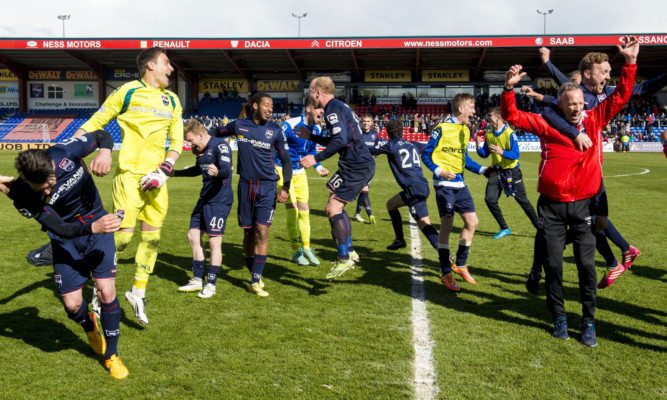
For a snapshot of where Scottish football is at any given moment, League tables are tough to beat.
Compare today’s standings with those at the end of the 1990-91 season, for example, and the rise of the Highland clubs leaps off the page.
As, it must be said, does the fall of some the game’s traditional powerhouses.
Then, Rangers, currently in the midst of this season’s Premiership play-offs, were the country’s champions.
Airdrieonians had just won promotion to the top flight from a First Division containing Clydebank and Meadowbank Thistle.
And just about to replace the Diamonds in the second tier were Montrose, heading up from the old Second Division along with Stirling Albion.
The most striking reading, though, comes from the finishing positions in the Highland League.
Ross County were champions, having seen off the challenge from, among others, Inverness Caley (2nd), Inverness Thistle (5th), Elgin City (7th), Peterhead (8th) and Brora Rangers (9th).
A quarter-of-a-century on, and that list is not one of prominent non-League outfits but a sizable chunk of Scottish football’s establishment.
Inverness Caley Thistle, the product of a 1994 merger of Caley and Thistle, have just become the most northerly UK club ever to qualify for European competition.
Their third-place finish in this season’s SPL has won them a place in next year’s Europa League.
To put the scale of that achievement into context, consider the fact that back in 1992, Clachnacuddin chairman David Dowling was ridiculed for predicting an Inverness team would do exactly that.
Their fun doesn’t end there ,either.
In 13 days they will travel to Hampden Park to take part in the Scottish Cup Final, where they will have a favourite’s chance against Championship side Falkirk.
It will be ICT’s second appearance in a national showpiece in 12 months with their bid to win last season’s League Cup Final ending in a penalty shoot-out loss to Aberdeen.
And while home crowds in the region of 4,000 are not the biggest in the country, they are 10 times the attendances Caley and Thistle would draw respectively back when they were playing in the Highland League.
Ross County were admitted to the senior leagues at the same time as their derby rivals and their progress has been almost as dramatic.
They have won the First Division (now Championship), Second Division (now League One) and the Third Division (now League Two).
They have captured the Challenge Cup twice and competed in the 2010 Scottish Cup Final, where they were beaten by Dundee United after knocking out Celtic in the semis.
Peterhead, who joined in 2000, have moved smoothly up to League One, Elgin City are still in League Two where they will have /just missed out on Brora Rangers for company next season after their success in the pyramid play-off.
So why then did it take so long for the Scottish game to invite them into the fold?
It is a question that has long been pondered in the Highlands.
Ross County, Inverness Thistle and Elgin City all applied for a vacant place back in 1974 but were knocked back in favour of Ferranti Thistle, a decision that prompted allegations of Central Belt bias.
Ferranti Thistle are now Livingston, having for 21 years been Meadowbank Thistle.
Another place did become available when Clydebank went to the wall but that went to Airdrie United, a new club formed following the liquidation of Airdrieonians.
The famous old name was to reappear, though, with United later paying for the right to reclaim it.
Plus there has long been internal opposition to change.
While Thistle were keen to go into the League in 1974, the merger with Caledonian 20 years ago, strongly pushed for by both the SFA and the SFL, was the cause of considerable rancour.
It led to a boycott of the new entity by a minority of fans of both clubs with the situation acknowledged to have taken a couple of years to settle down.
And if Ross County’s progression has been almost as smooth as it is possible to get, Peterhead and, particularly, Elgin City have found their late arrival to the Senior scene has meant they don’t have the novelty factor in their favour.
The Highlands already have big fish in the pool.
It is a situation which led to the lukewarm reception in the north for the Pyramid Play-offs.
The north has already risen and having done so, the logic goes, can’t be expected to keep expanding indefinitely.

Enjoy the convenience of having The Sunday Post delivered as a digital ePaper straight to your smartphone, tablet or computer.
Subscribe for only £5.49 a month and enjoy all the benefits of the printed paper as a digital replica.
Subscribe